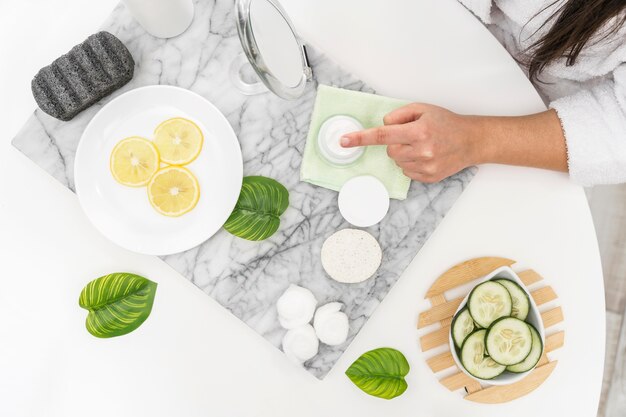When looking into supplies and instructions for making candles, you want to decide if you will use the cold or hot process. Homemade soap can be made for gifts or as a personal business. Here are the main differences between hot-process and cold-process soap making and the soap making supplies they use:
Hot Process Steps
Once you have the right soap making supplies, measure and melt the ingredients in a large stainless steel pot. As the fats melt, make a lye solution by dissolving sodium hydroxide in water, carefully observing safety guidelines. When the fats have melted and are cooler to touch, gently pour the lye solution into the oils. Continuously stir to start the saponification process. You can also start with soap blocks containing all the necessary ingredients instead of making the lye.
Keep stirring the mixture until you get to a light trace, and make additions such as fragrance or color. A light trace is where the soap has started to thicken and is ready to pour into molds.
Transfer the soap batter into a mold that has been prepared and maintained at the right temperature for saponification. Let the soap undergo the gel phase, which could take up to 24 hours.
Peel off all the insulation layers and allow the soap to cool completely before removing the mold. Portion the soap into bars and let them dry for several weeks so that the water content evaporates.
Hot Process Supplies
Besides using a large stainless steel or enamel pot, there are other supplies you’ll need for the hot process:
- A quality thermometer is ideal for measuring temperatures so the mixture doesn’t get too hot.
- Gloves, safety goggles, and long-sleeved clothing minimize contact with possible splashes and spills of the substance.
- An immersion blender assists in attaining the right texture and makes the saponification process faster.
- Accurate scales are key when you want to measure portions of the ingredients.
- Molds, including silicone or wooden ones, form your finished soap.
- Scents from essential oils or fragrance oils.
- Oils and fats, such as olive oil, coconut oil, and tallow.
The additives should be introduced using a stick blender or whisk. Some of the primary raw materials include sodium hydroxide (lye) and distilled water.
Cold Process
Cold process soap making starts with accurate measurement of all the ingredients. Pour the lye slowly into the water while stirring it continuously, and make sure it dissolves completely before leaving it to cool. At the same time, preheat oils in a large pot to the recommended temperature. After the lye solution has reached a suitable temperature, add the oils to it. Blend the mixture using an immersion blender until it reaches a light trace. Add any fragrance oils, essential oils, or colorants.
Transfer the soap batter to the prepared molds and gently shake it to eliminate trapped air. Place a towel or blanket over the top of the molds to provide insulation for the saponification process. After 24-48 hours, gently remove the soap from the molds and divide it into individual bars. Allow the soap bars to cure in a well-aerated area for 4 to 6 weeks. Most of the water in the soap evaporates, and the soap strengthens to form a usable product.
Cold Process Supplies
Cold process soap making requires an immersion blender to help ingredients mix more smoothly. Hand mixers can be used, though they are more time-consuming and can result in more splashing. Some soapmakers use high-powered stand mixers for larger sizes.
Silicone molds are preferred since they are flexible, and the soap can easily be removed. Wood with parchment paper can also work and provide a more rustic appearance. For insulation, towels or blankets can be wrapped around the molds. Styrofoam boxes also offer better insulation and have the added capacity to be reused many times. Some soapmakers even resort to using specific thermal bags that are produced exclusively for soap curing.
Get Soap Making Supplies
Cold process soaps are often more polished and smoother than hot process soaps, which have a more natural and rougher look. Cold method soaps take too long to cure, while hot process soaps can be used as soon as they are made. The first step is to contact a vendor who can help you with soap making supplies.
